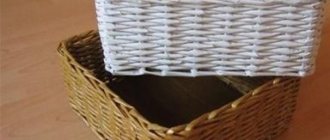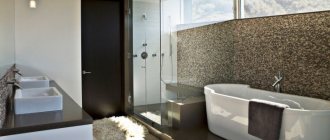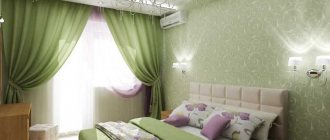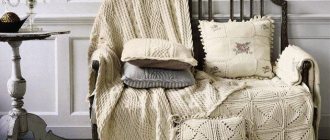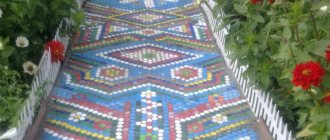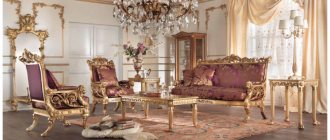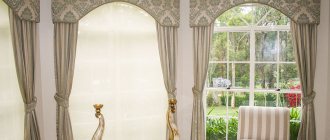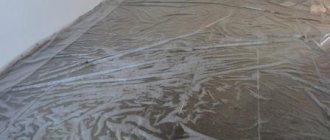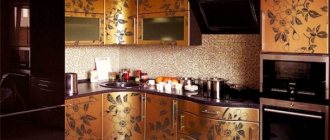New in decor! Stylish DIY rope wall
You can divide a large room into zones in this unusual way.
Partitions made from jute rope can be an excellent solution, for example, for an office. They are inexpensive to manufacture - much cheaper than building solid concrete partitions. In addition, they retain light and visibility throughout the space, while also bringing a warm texture to the room. The manufacturing process is very simple. You will need wooden planks with holes (you can make them yourself or order them from a workshop), and jute rope. Measure the required number of ropes, thread them through the holes in the bar and secure with a knot. Use screws to secure the wooden strips so that the rope knots are not visible.
Installing a heat shield behind a heating radiator with your own hands
How to clean a washing machine filter with your own hands
Rope and rope decor for interior items
Like special little things? Decorate familiar interior elements with rope or rope decor. Or create a completely new item of your own design.
A thick rope can easily act as a tie for linen curtains, while a thin rope can be used to wrap a flower pot or make a creative screen. Rope also makes a colonial mirror frame, towel hooks or a nautical rug.
Fold a thick rope into rings, glue it - and you get a basket or pencil holder. And if you wrap a rope around some weight and twist it into a beautiful knot, a door closing at the wrong time will no longer bother you, the original decor will become an excellent stopper.
Copying materials
The use of any materials posted on the Labuda.blog website is permitted only if you provide a direct indexed link (hyperlink) to the copied page of the Labuda.blog website. A link is required regardless of the full or partial use of materials. Some authors may prohibit copying of their materials with a warning at the end of the article.
ATTENTION! We do not allow third-party resources to embed links to image files hosted on our hosting. All images are protected from hotlinking. Regular copying and saving of images to third-party resources is permitted!
A simple and cheap way to delimit space: we make a light partition using the macrame technique
After taking macramé courses at a local club in my hometown, I became a little more ambitious, more confident in myself and in my capabilities. I decided to use a few things I learned on a larger scale. At that time I wanted to make not just a cute little thing, but something larger in size.
All the necessary skills that I acquired during the training courses were useful to me in creating a wonderful partition with my own hands. This project just shows that you can make some epic home decor projects with the right instructions and a lot of creative optimism.
Rope as a handrail
If you have a house near a pond, or even close to the sea, tension rope railings would look ideal there. In general, how beautifully it will fit into the interior will depend on the chosen fasteners with rings that will support such a structure. You can view our photos of ropes in the interior, decorated in a variety of ways.
DIY flower stands - manufacturing instructions with photo examples
It is recommended to make not one, but several nodes. This way the rope located between them will not sag down. Such nodes are not only functional. They will also give an excellent decorative role in the interior.
Lark's head knot
You will need to fold two ropes into twelve knots. Fold the two strands in half and place the center of this pair of rope strands on top of the first wooden dowel. Then wrap them around the dowel and pull the loose ends through the loop. You've probably made a knot like this before and didn't even know it. That's the whole point of the pun.
Continue adding pairs of rope strands to the dowel until you're done. If you mess up, it will change the appearance of your drawing. Make sure all of your completed lark head knots are spaced the same distance from each other.
Mirrors and shelves
A round mirror suspended on a rope is a very popular decorative element, which is often found in nautical-style interiors and even in lofts (Charlize Theron, for example). Such mirrors are sold in many stores, but you can also make them yourself. As for the shelves, you will need several planks, a long rope, a drill and fasteners. See what the final result might look like. The most important thing is to make sure that the shelves are securely attached, do not wobble and are not going to collapse on someone's head at the most inopportune moment. It’s better to play it safe and secure the shelves separately to the wall, and leave the rope as a decorative element.
Half knots
We'll use the half knot below in the design to add subtle contrast, but it also makes up the first step of the square knot, so I'll show that first. The half knot requires four strands. The two center ropes stay where they are and the two outer ropes come off a little. Then create a bend in the outside left rope and move it towards the outside right rope and then under it.
Then bend the outside right rope under where the outside left rope crossed it, behind the two center ropes, and come back through the bend from the outside left rope.
We'll use this knot a little later, but it's also the first half of the knot that you'll use for the first section of the partition.
Rope shelves
Hanging shelf options using a rope type will perfectly complement a child's room in a nautical style. To do this, you need to prepare several flat boards, drill 2 holes in the side, pull a rope through them and tie knots under the shelves.
However, we do not recommend placing breakable objects on such structures! After all, such a product is unstable.
Variable square knot
You can see how the square knots have formed in this photo (photo below). In the first row you should have twelve square knots. To create the second row, you will use two strands from one square knot and two strands from the square knot next to it to create a new one that will join them together. You can start in the center of your screen and work your way from either side (as I prefer to do), or start on one side and work your way out. As you can see, when you get to the edges of the second row, you will have an extra pair of rope strands on each side.
As you add your knots, be mindful of the spacing between rows. You don't want to start tying the ropes closer and closer together or you'll end up with a bent wall hanging. Sometimes it's helpful to take a step back to check your composition before continuing to weave. Believe me, you won't want to completely redo everything in the end, so it's better to fix everything in advance.
Rope and ropes in the interior: lampshades and chandeliers
It's simple. You have a ready-made lamp, lampshade or even an Ilyich light bulb. You need to wrap a rope around the proposed handmade lamp and secure it to keep the structure in place. In the case of a lampshade, the ropes should fit tightly together, so make sure you use a good glue (we at Kvartblog prefer a glue gun).
Knots on the edge
For this design, I leave about seven centimeters of space between all my knots because I want the divider to be light and airy. When I add the third row of knots, I will go back to the original pattern of using all the threads. The space that your outer rope creates on the left side of your future divider and then on the right side should be a little more than twice as long. Try to do everything right. It's difficult, but possible.
For my pattern, I made four alternating rows of square knots and then made six alternating rows of half knots. I then completed the rest with thirteen alternating rows of square knots. This made the rows look consistent in relation to each other. The design has also changed a little, but that's even for the better. It didn't have to look like I was hanging a hammock from the ceiling.
To add a bottom pin to your septum, you need to make as many lark's head knots as possible. You can't create them the way you did in the beginning, so we do it backwards. I started with a few already attached to show you what it will look like when it's all done.
Rope in curtains
A white room, respectively, with white curtains, which are hung with twine. All this adds romance to the interior. As a rule, several standard options for fastening curtains to curtain rods are used. For this, rings, eyelets, loops, drawstrings, braid, and ties are used. Also, twine, which will be tied into the shape of a ring, will cope with this task perfectly.
This material is strong enough to withstand the material from which the curtains will be made. At the same time, the rope will help bring a nautical theme to the interior, which looks great in living rooms/bedrooms.
Ending a Workflow
If you don’t need something practical and beautiful to divide the space in the room, you can make a partition using the macrame technique. It would look just as stunning against a painted wall for great contrast or even used as a simple floral party backdrop. Either way, this is a great project for those who want to go big with a simple design.
I really hope that you enjoyed this master class.
Source
Rope, jute rope in the interior
You can use a wide variety of ways to decorate your home. For example, many perceive the same twine only as a type of rope that is used to tie/tie something. They are also used for interesting decoration. Any design in a nautical style will look great with ropes, especially if they are used in some original way!
We hope that the photo of ropes in the interior will help you get inspired and create your own interesting design option.
How to use decorative rope in the interior: ideas for inspiration (31 photos)
Twine, jute and hemp rope, decorative rope are environmentally friendly, flexible and versatile items that can be used to decorate a designer interior. They perfectly emphasize the decor of restaurants and cafes in a marine style, studios, offices in eco and country styles. Textured ropes are used to decorate children's rooms, bedrooms, living rooms and kitchens. Due to its natural origin, the material is combined with natural stone, wooden textures, bamboo, cork wallpaper, and ceramic surfaces. We have selected the most interesting, functional and beautiful ideas for using rope.
Shelves and on ropes in the interior
The next item that can be hung on ropes are decorative shelves. As a rule, they are made of wood, and rope or ropes are pierced into the holes on the sides and hung from them to the wall.
Shelves on ropes photo
Shelves for children's rooms on ropes
Decorative rope in the interior
Due to the fact that rope material is made from plants, it has a list of advantages:
These qualities, as well as the aesthetic appearance and strength, allow jute to be widely used in the interior of residential premises. They are wrapped in decor, used to hang paintings and mirrors, decorate textiles and furniture, and equip partitions in apartments and railings on stairs.
Decorative rope partition as a way to zone a room
The design of spacious rooms involves the allocation of separate zones. In the offices of large companies, this is how employees’ workplaces are designated; in cafes, visitors’ tables; in a home environment, personal space is designated. The idea is to divide the area while maintaining its cohesive appearance. This effect can be achieved using transparent and loose textures.
A partition made of tensioned or freely hanging ropes is just such an option. For zoning, vertical, horizontal and free placement of cords is used. They are pulled between two beams, secured with knots. In this case, one beam is mounted to the ceiling, the other to the floor.
In children's play complexes, zones are separated by a grid. It allows parents to see the child, and children enjoy climbing on durable but mobile structures.
DIY floor decorations
A factory-knitted or hand-knitted jute rug is well suited for a Scandinavian or rustic style. The cost of the product depends on its size and manufacturing method. Handmade carpets are expensive, but you can make them yourself. To do this, use the following:
Having determined in advance the shape of the future floor decor, it is applied to a fabric base (the contours of the workpiece are drawn or marked on the canvas). Using silicone glue, the cord is laid according to the pattern, pressing it with your hands. When the product dries, the excess parts of the fabric base are cut off.
hanging bed
The bedroom is transformed by the use of natural large cables, especially if they help the bed float above the floor. This idea is used by designers to realize the original interior of a room for children, teenagers and young people. A flying bed creates the impression of lightness of construction and fills the atmosphere with special magic.
The thickness and strength of the cables are as important as the reliability of the fastenings. When installing hangers, pay attention to the material from which the ceiling is made. Strengthen anchors into the concrete surface using a drill. Large wooden beams can withstand the load well. It is not worth installing cables in a suspended, suspended or plasterboard ceiling: the fastening will not support the weight of the sleepers and the bed itself.
Children really like the hanging sleeping arrangement. They are not bothered by the fact that the bed sways when moving. In a child's bed, the bed is hung in several ways:
Beds suspended on a rope in the interior
As we said above, a rope in the interior has not only a decorative function, but also a functional one - you can hang objects on it. Do you want to have hanging beds or swings in your apartment? Then go ahead! There is nothing more simple and, at the same time, original than a bed suspended on a thick rope. Just be sure to make sure that the ceiling can withstand such heavy loads. By the way, this idea can be implemented not only in an adult bedroom, but also in a children's room.
Hanging beds on a rope in a bedroom interior
Hanging beds on a rope in an exotic interior
In addition to completely suspended beds, which are attached to the ceiling using four ropes, you can also use a bed attached with the long side of the base to the wall and secured with ropes for safety (such beds are somewhat reminiscent of the upper bunks on a train). Teenagers will appreciate this idea for decorating a bed!
Rope in the interior - hanging beds
Rope in the interior - hanging beds
